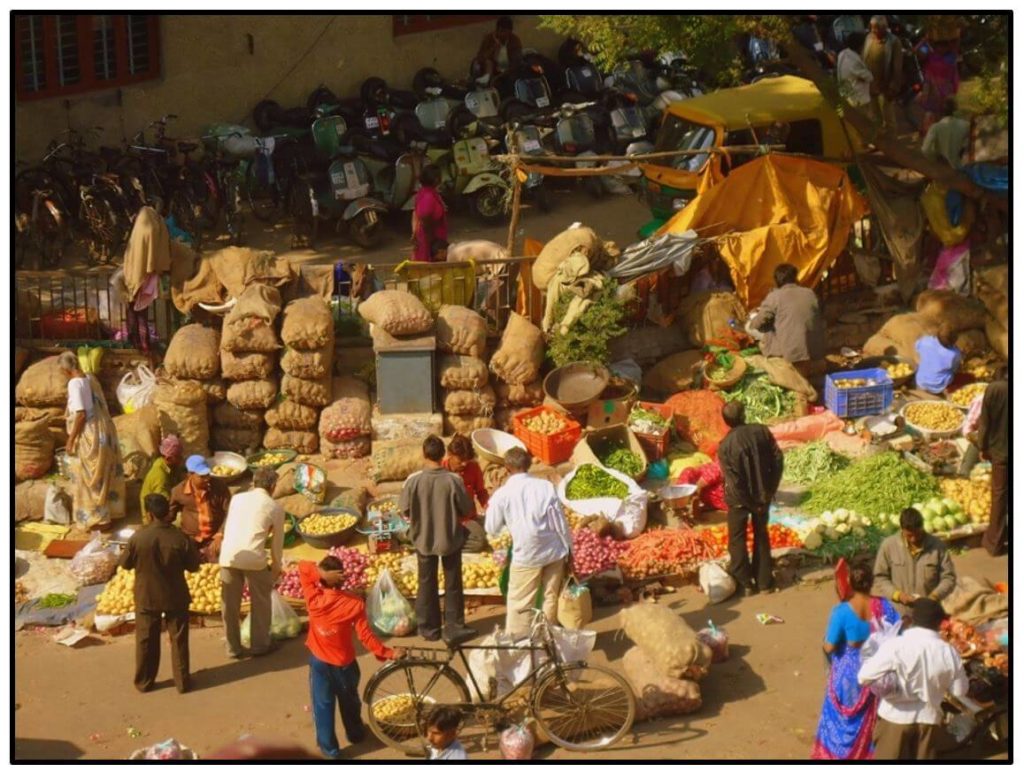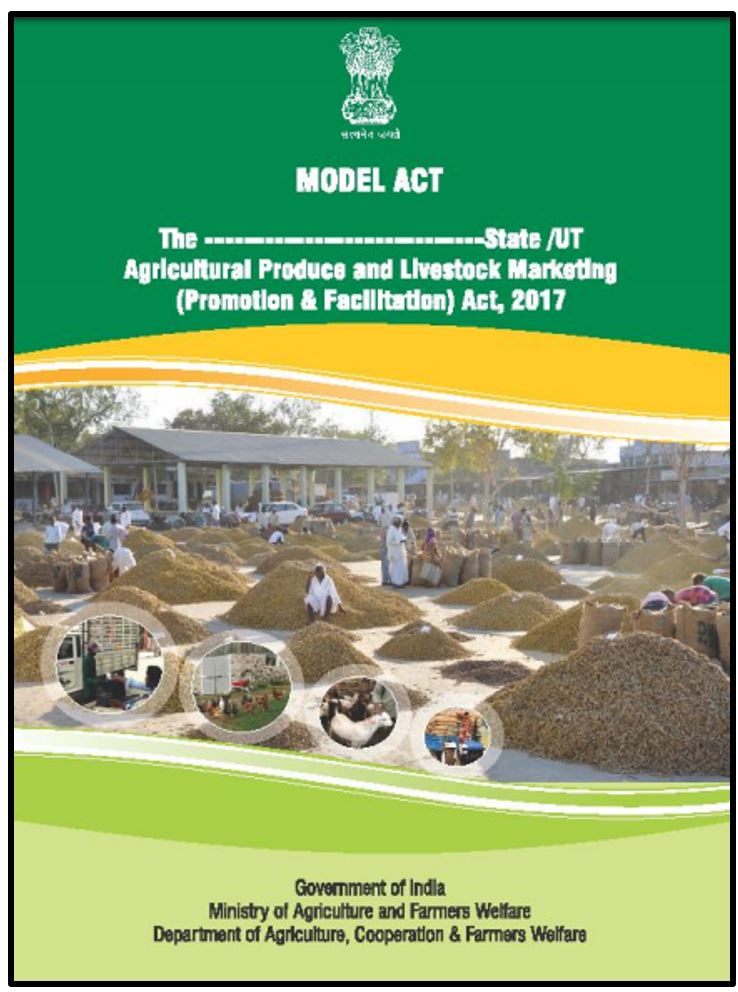One of the measures announced by the Government of India as part of the COVID-19 relief package was changes proposed to the APMC law. But what are APMCs? How do they affect the farmers?
Whilst the lockdown resulted in a temporary halt of economic activities, various state governments have announced amendments to their respective Agriculture Produce Marketing Committee Laws (APMC Laws), in order to make sure that there is sustained supply of agriculture produce during this period and that the farmer has freedom to sell his produce without restrictions. In this story, we look at what APMC law is, why was it formulated, and how the law affects farmers.
APMCs have been established to help farmers from distress sale and debt
Agriculture marketing, which mainly concerns buying and selling of agriculture produce, is considered the key driver of agriculture sector at present, post globalization, privatization, and liberalization, which has opened new marketing opportunities. Production uncertainties and market unpredictability are some of the structural hindrances to the agriculture sector. Farmers were forced to sell produce in distress due to debt. Not just that, middlemen bargained and bought the produce at a low cost, since farmers did not have adequate storage or transportation facilities. Improper market regulations meant farmers did not get a fair price for their crops. APMCs are marketing boards which have been established by many states to safeguard farmers from large retailers, moneylenders or creditors. These were formed to overcome these challenges. Under the APMC regulations, all produce must be sold in markets through auctions.
Agriculture market regulations have been imposed in India from the colonial period
Before India got independence, agricultural marketing policy was mainly focused on controlling the price of food for consumers and availability of Agri raw material. It was only after independence that the focus was shifted to protect the farmers’ interests.
In India, agricultural produce market regulations have been in place even during the British rule since the producers had to incur high marketing costs due to varied reasons such as hatta system, and traders monopoly. Since the British rulers wanted to make cotton available at reasonable prices in the textile mills of Manchester, the first regulated market (Karanja) was established in 1886 under Hyderabad Residency Order. Berar Cotton and Grain Market Act of 1887 was the first legislation under which an empowered British Resident could decide any place in the assigned district as a market and set up a committee to supervise regulated markets.

The act was considered a model for the rest of the country. The recommendation of the Royal Commission of Agriculture is considered an important landmark in the history of agriculture marketing. This included regulation of trade and establishment of mandis in the countryside. Later, in 1938, a model bill was prepared and circulated by the Government of India but did not make any progress. It was only in 1960s and 70s that the states began implementing the regulations, and gradually, organized agricultural marketing came into existence with the establishment of APMCs.
Different states have different APMC acts
APMCs provide farmers with a platform to market their produce, regulate the sale of produce and collect market fees for it. Agriculture, falls under the purview of the State, as per the Constitution of India. Intra-state trade in commodities falls under the State list as well, but inter-state trade and commerce falls under the Union List. That is, intra-state trade in agricultural commodities is regulated by the state whereas the same between states is regulated by the Central Government. Thus, different states have different APMC Acts, and the marketing committees are set up as per the law prevalent there.
APMC Model Act was released in 2003
In 2003, to bring about a much-needed reform in the agriculture market, the then government released the 2003 Model APMC Act that brought about new market channels such as private wholesale markets, direct purchase, and contract farming based on the recommendations by an Inter-Ministerial Task Force. Special markets for onions, fruits, vegetables, and flowers, rationalization of market fees, and replacement of existing licensing system with a simple one is also a part of the model act. However, only 16 states made amendments to their APMC Acts and provided for direct marketing, contract farming and establishment of markets in the private/cooperative sectors with the objective to increase competition. Only six states had notified the amended rules as per a report in 2013.

The latest version of the model act was released in 2017 & includes livestock marketing
The latest model Agricultural Produce and Livestock Marketing (Promotion and Facilitation) Act, 2017 was released in 2017 to bring about reforms in agricultural marketing after 14 years of the first model act in 2003.

Under the new model Act, depending on a state’s geography, it is divided into market areas that are managed by market committees formed by the respective governments. Market Boards comprising of APMC chairman, representatives of Government Departments, members of yards (mandis), market sub yards, trade license holders nominated by the government, etc. are formed to supervise the functioning of committees. The Principal Secretary in charge of agriculture and/or horticulture, Agriculture Marketing Advisor to Government of India, NABARD Representative, etc. are ex-officio members of the Board.
Some important functions of APMCs as enumerated in the model act include
- Giving authorization to agents/traders to carry out procurement and distribution activities
- Bring about transparency in pricing system and transactions
- Providing necessary facilities for marketing of notified agriculture produce including livestock
- Regulate and supervise auctions
- Ensure that the payments to farmers take place on the same day
- Give publicity through posters, meetings, slides, and other means on the various functions undertaken
- Promote Public-Private Partnership in agricultural markets management
- Take measures to prevent sale of products below the Minimum Support Price
Extent of adoption of the act is different in different states
There are multiple differences in the provisions of the APMC legislations in various states. These differences include commodities that are covered, membership and appointment in marketing companies, and the role of marketing boards. The extent to which different states have adopted the 2017 model act is also different. As per a Lok Sabha answer as in November 2019, Arunachal Pradesh had adopted the 2017 model fully while the states of Uttar Pradesh, Chhattisgarh, and Punjab had adopted some of the major provisions of the act.
The e-NAM trading portal launched by the NDA government in 2016 connects all existing mandis. The portal is a repository of all APMC related information and services. Details of commodity arrival, price, buy and trade offers etc. are a part of this portal. This is aimed at increasing transparency of service.
The Model Act has its own shortcomings
One major drawback of the APMC model is the restriction imposed on farmers. A farmer is not allowed to sign a contract with a manufacturer or processor. It is mandatory that they sell their produce through the specified channels. Furthermore, even though the act is planned to avoid monopoly, the act tacitly allows monopoly of the APMC over buying the farmer’s produce. Prevalent corruption in APMCs and typical bureaucratic machinery also act as hindrances to the farmer. These acts also impose multiple levies of mandi fee and multiple licenses need to be acquired. These shortcomings have been hotly debated in the light the COVID-19 induced lockdown.
In a subsequent story, we discuss the amendments brought in the Act by Centre and States in light of the COVID-19 crisis.
Featured Image: What are APMC Laws


